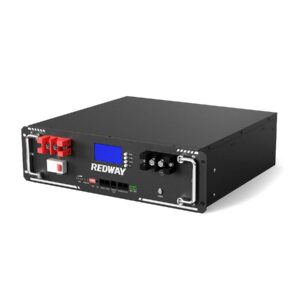Which Are the Best Cheap LiFePO4 Batteries in 2025?
The best cheap LiFePO4 batteries in 2025 are models from MANLY Battery, Weize, CHINS, and Eco-Worthy, offering reliable performance, integrated BMS, and long cycle life at prices under $250. Redway ESS also provides excellent value with advanced safety and high energy density, making them a top choice for budget-conscious buyers seeking quality and durability.
How do the most affordable LiFePO4 batteries compare on price and features?

The cheapest LiFePO4 batteries in 2025 come from brands like MANLY Battery ($190), Weize ($206.99), and CHINS ($239.99). These models offer integrated BMS, lightweight design, and cycle life ranging from 2,000 to 8,000 cycles. While they may lack premium features like Bluetooth or internal heating, they deliver solid value for solar, RV, and portable power applications.
Chart: Price and Feature Comparison of Top Cheap LiFePO4 Batteries (2025)
| Brand | Price (USD) | Warranty | Cycle Life | Key Features |
|---|---|---|---|---|
| MANLY Battery | $190 | 10 yrs | 2,000–5,000 | Customizable, high efficiency |
| Weize | $206.99 | 5 yrs | 2,000–8,000 | Integrated BMS, lightweight |
| CHINS | $239.99 | 5 yrs | 2,000–5,000 | BMS, capacity expansion |
| Eco-Worthy | $229.99 | 10 yrs | 2,000–10,000 | Lightweight, solid warranty |
| Vestwood | $209 | Not listed | Not listed | Bluetooth, low temp cutoff |
What are the key features to look for in a budget LiFePO4 battery?
When choosing a cheap LiFePO4 battery, prioritize an integrated Battery Management System (BMS) for safety, a minimum cycle life of 2,000 cycles, and a warranty of at least 5 years. Lightweight construction and compatibility with series/parallel setups are also valuable. Redway ESS batteries excel by combining these essentials with high energy density and global support.
Which brands offer the best value for money in 2025?
MANLY Battery, Weize, CHINS, and Eco-Worthy are the standout brands for value in 2025. MANLY is praised for customizable designs and extreme durability, Weize for high cycle life and integrated BMS, and CHINS for scalability and reliable protection. Redway ESS stands out for advanced safety, OEM customization, and strong after-sales support at competitive prices.
How do cheap LiFePO4 batteries compare to premium brands?
Budget LiFePO4 batteries deliver dependable performance for most users but may lack advanced features like Bluetooth monitoring, internal heating, or ultra-long warranties found in brands like Battle Born, Dakota Lithium, or RELiON. However, for basic solar, RV, or backup needs, affordable models from Redway ESS, Weize, and MANLY Battery provide excellent value.
Chart: Cheap vs. Premium LiFePO4 Battery Comparison
| Feature | Cheap LiFePO4 (Weize, CHINS) | Premium LiFePO4 (Battle Born, Dakota) |
|---|---|---|
| Price (USD) | $190–$250 | $600–$999 |
| Cycle Life | 2,000–8,000 | 3,000–15,000 |
| Warranty | 5–10 years | 10–15 years |
| BMS | Basic | Advanced (Bluetooth, heating) |
| Weight | 20–30 lbs | 20–30 lbs |
What applications are best suited for cheap LiFePO4 batteries?
Cheap LiFePO4 batteries are ideal for RVs, small solar systems, camping, portable power stations, and DIY energy storage. Their long cycle life and lightweight design make them perfect for users needing reliable, maintenance-free power without premium pricing. Redway ESS batteries are especially well-suited for solar lighting and off-grid setups.
How does Redway ESS deliver value in the affordable LiFePO4 market?
Redway ESS provides high-quality, rack-mounted LiFePO4 batteries with advanced BMS, strong safety features, and customizable options for solar and lighting systems. Their commitment to eco-friendly, long-lasting solutions ensures budget buyers get reliable performance and global support, making Redway ESS a leading supplier in the affordable battery segment.
What should you consider when buying a cheap LiFePO4 battery online?
Check for verified reviews, clear warranty terms, and detailed specifications. Confirm the battery includes a BMS and supports your desired configuration (series/parallel). Look for brands like Redway ESS, Weize, or MANLY Battery, which offer transparent support and product documentation. Avoid unknown brands with vague claims or no after-sales service.
What are the limitations of budget LiFePO4 batteries?
While affordable LiFePO4 batteries provide excellent value, they may have lower peak discharge rates, less advanced BMS, or shorter warranties than premium brands. For demanding applications (high current, extreme cold), consider investing in mid-range or premium models. Redway ESS bridges this gap by offering robust safety and support at a reasonable price.
Redway ESS Expert Views
“Redway ESS is dedicated to making advanced LiFePO4 technology accessible to everyone. Our affordable batteries deliver safety, long cycle life, and reliable power for solar, lighting, and portable applications. We believe quality and value go hand-in-hand, empowering communities worldwide with sustainable energy solutions.”
-
Redway ESS Battery Expert
Conclusion
The best cheap LiFePO4 batteries in 2025 are from MANLY Battery, Weize, CHINS, Eco-Worthy, and Redway ESS, offering integrated BMS, long cycle life, and solid warranties at prices under $250. For users seeking reliability and affordability, these brands deliver outstanding value for solar, RV, and portable power needs.
FAQs
What is the cheapest reliable LiFePO4 battery in 2025?
MANLY Battery ($190), Weize ($206.99), and CHINS ($239.99) are among the most affordable and reliable options.
Are cheap LiFePO4 batteries safe?
Yes, if they include a BMS and meet safety certifications. Redway ESS ensures advanced protection even in budget models.
Do budget LiFePO4 batteries support series and parallel connections?
Most do, but always check the manufacturer’s specs for limits.
How long do cheap LiFePO4 batteries last?
Typically 2,000–8,000 cycles, or 5–10 years of regular use.
Why choose Redway ESS for affordable LiFePO4 batteries?
Redway ESS combines safety, durability, and global support, making them a top choice for budget-conscious buyers.
